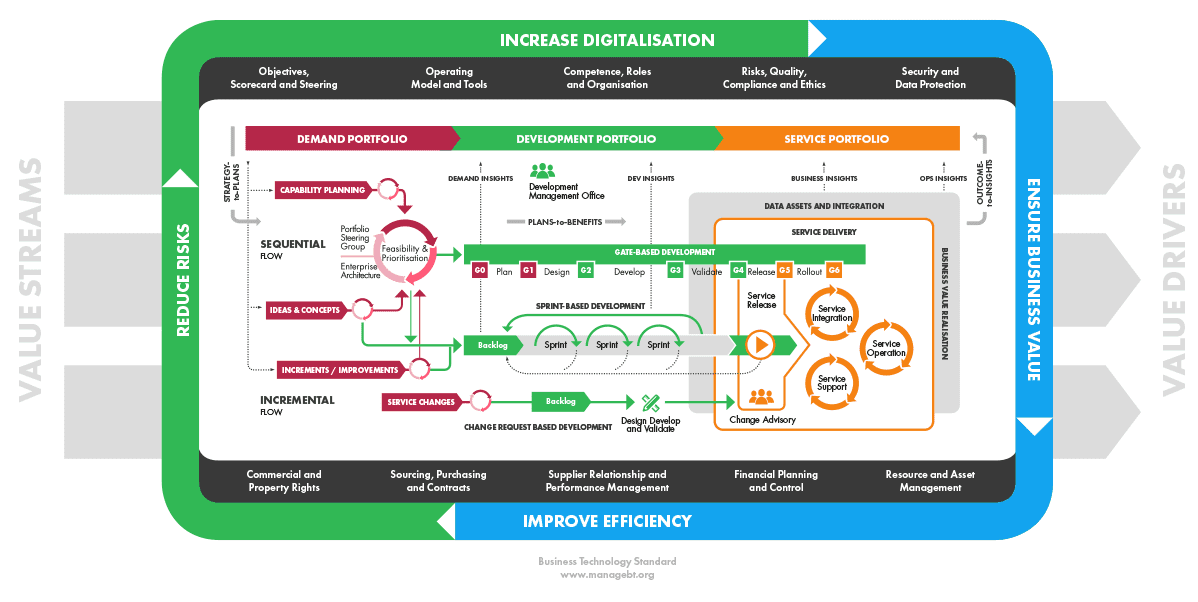Service portfolio complements demand and development portfolios with a service operations perspective. Service portfolio provides visibility on service status, lifecycle and business value. This kind of overview is required for governance, optimisation and risk management purposes.
Service portfolio steering reviews the service status and business value and makes lifecycle decisions such as approving new services and service retirements. Service catalogue lists the major services and provides a structure for service status reporting that makes sense for the business.
Service status includes the following information:
Although it is sometimes difficult to measure the business value of information technology solutions, the following three main categories can be used:
The service lifecycle defines four phases as illustrated in the picture below. The service portfolio interest covers phases from ‘in pipeline’ to ‘in production’ and ‘retired’. In some regulated businesses, the retired phase is followed by the archive phase. The archive phase means that the service is kept accessible for regulatory traceability purposes even when it is no longer in operational use.
Figure 2.8.1 The service lifecycle
Service portfolio steering is chaired by the Business Technology Management Officer (BTMO).
The purpose of the service catalogue is to describe the business technology services available for the business and service users. The catalogue provides clarity on service (ownership) structure and is thereby an effective communication tool in business relations. It illustrates the diversity of the services, which is usually wider than generally assumed by the business leaders. The service catalogue also includes many service management topics explaining full scope of the services, and as such, gives a better understanding of total costs of the services which is essential information for the business.
Service catalogue:
A complete service catalogue consists of an overview of business technology services, service brochures for users and service requests and order catalogue for self-service purposes.
Figure 2.8.2 Different catalogue perspectives
